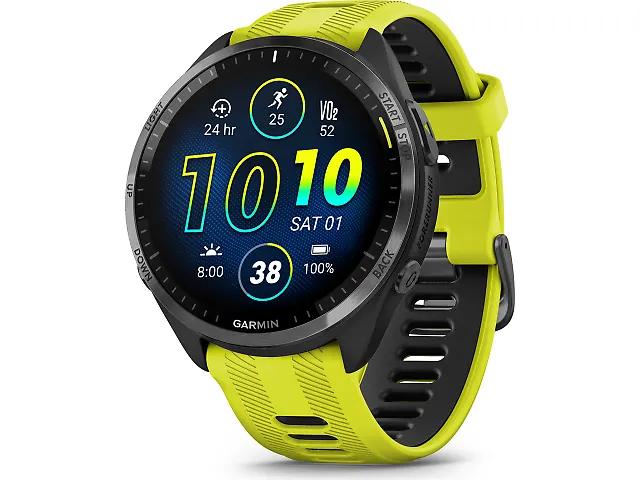In a world where data-driven decisions shape our athletic pursuits, teh Garmin Forerunner series emerges not just as a smartwatch, but as a comprehensive tool for the discerning data enthusiast.Designed for runners, cyclists, and outdoor adventurers alike, these devices go beyond mere tracking, offering a treasure trove of advanced analytics that can transform the way we understand and improve our performance. From heart rate variability to VO2 max estimates, Garmin’s complex algorithms dissect every heartbeat, stride, and climb. Coupled wiht robust export options,both casual joggers and serious athletes can savor their data for deeper insights or share it seamlessly with other platforms. Whether you’re fine-tuning your training regimen or simply indulging your inner data nerd, the Garmin Forerunner stands ready to elevate your experience to new heights. Join us as we delve into the world of advanced analytics and export capabilities that make the Forerunner a vital companion in the quest for optimal performance.

Unlocking the Power of Performance Metrics with Garmin forerunner
When it comes to maximizing your training efforts, the Garmin Forerunner stands out as a versatile tool for data enthusiasts.By leveraging advanced performance metrics,athletes can delve into a wealth of information that goes far beyond basic pace and distance. The device offers features such as VO2 max estimates, training status, and recovery insights, allowing users to gain a comprehensive understanding of their physical capabilities. Utilizing these metrics, runners can identify trends, set realistic goals, and fine-tune their training plans for optimal performance.
In addition to on-device insights, the Garmin Forerunner facilitates seamless data export options that cater to tech-savvy users looking to analyze their stats in greater depth. By integrating with platforms such as Strava, TrainingPeaks, and others, athletes can visualize their performance on dashboards tailored to their unique needs. The ability to download CSV files further allows the meticulous data nerd to analyze metrics like split times, heart rate zones, and intensity minutes in spreadsheet applications, making it easier than ever to track progress and recognize patterns over time. Below is a quick overview of some of these valuable features:
| Feature | Description |
|---|---|
| VO2 Max | Estimates the maximum amount of oxygen your body can utilize during intense exercise, reflecting cardio fitness level. |
| Training Status | Indicates whether your training is productive, peaking, or requires recovery. |
| Recovery Time | Provides guidance on how long to recover after a workout to optimize performance gains. |

Diving Deep into Advanced Analytics Features for Data enthusiasts
- VO2 Max Estimation: Gain insight into your aerobic fitness levels and track your progress over time.
- Training Load Balance: Assess whether your workouts are hard enough to yield benefits without risking overtraining.
- Performance Condition: Get real-time feedback on your performance during activities, helping you adjust your effort accordingly.
Exporting this wealth of data enhances the experience for the analytical-minded athlete. The Forerunner allows users to seamlessly transfer data to various platforms, making it easy to visualize trends. Options for data export include:
| export Type | Format | Use Case |
|---|---|---|
| CSV Export | CSV | Ideal for custom analysis in Excel |
| Third-party Sync | API | connect with apps like Strava and TrainingPeaks |
| Garmin Connect | Web Portal | View detailed graphs and community insights |

Seamless Data Export: Maximizing Insights Beyond the Watch
Harness the full potential of your Garmin Forerunner by unlocking the hidden depths of its data export capabilities. With seamless integration to numerous platforms, users can effortlessly transfer their workout metrics in a variety of formats, ensuring that no vital statistics go unrecorded. This functionality not only facilitates trend analysis but also allows for deeper comparative studies against ancient performance. By utilizing formats such as CSV, TCX, and FIT, you can maintain a comprehensive overview of achievements, further empowering your fitness journey.
Moreover, the ability to connect with third-party applications expands the analytical horizon. Consider linking your data to powerful tools such as Strava or TrainingPeaks, where you can expand insights through custom metrics and visualizations. Below are key platforms that complement your data export efforts, offering tailored analytics:
| Platform | Key Features |
|---|---|
| Strava | Social sharing, leaderboards, segment analysis |
| TrainingPeaks | Performance management, detailed workout analytics |
| Google Sheets | Custom formulas, group data analysis |
| Excel | Advanced sorting, graphing capabilities |
By embracing these options, you will enhance your understanding of performance patterns, optimize your training strategies, and ultimately, drive your athletic progress with precision and clarity.

Integrating Garmin Data with Third-Party platforms for Enhanced Analysis
Integrating Garmin data with third-party platforms opens a treasure trove of opportunities for those obsessed with metrics and analytics. Services like Strava, TrainingPeaks, and MyFitnessPal allow users to seamlessly import their Garmin data, enhancing their ability to monitor performance, set bespoke training plans, and analyze trends over time. Data nerds can dive deeper into their training sessions, comparing stats across various metrics to discover what truly impacts their performance. This cross-platform functionality not only enriches the user’s experience but also helps in crafting a more tailored training regimen.
Furthermore, users can leverage APIs and export options to transfer their data in different formats, such as CSV or TCX files, making data manipulation and sharing easier than ever. Consider key integrations that provide unique insights into training patterns and recovery metrics, such as the ability to generate custom reports or visualizations that highlight crucial achievements. By utilizing these platforms, athletes can optimize their training based on comprehensive analyses that traditional metrics alone may overlook.Here’s a quick comparison of popular platforms:
| Platform | Integration Type | Unique Features |
|---|---|---|
| Strava | Automatic Sync | Social Sharing, Segment Leaderboards |
| TrainingPeaks | Manual import/Export | Advanced Performance Metrics, Adaptive Training Plans |
| MyFitnessPal | Manual Sync | Nutrition Tracking, Caloric Adjustments |
To Wrap It Up
As we draw the curtain on our exploration of the Garmin Forerunner and its wealth of data-driven features, it’s clear that this device is more than just a running companion—it’s a gateway into a world of detailed analytics for every data nerd at heart. With its advanced metrics and versatile export options, the Forerunner empowers users to dive deep into their performance, revealing insights that can transform casual jogs into sophisticated training regimens. Whether you’re meticulously tracking your heart rate variability or exporting detailed reports for personalized review,Garmin’s dedication to enhancing athletic performance through data is unmistakable.
As technology continues to evolve, so too does our ability to understand and optimize our workouts. So,whether you’re an avid runner,an aspiring athlete,or a dedicated statistician,the Forerunner opens up an expansive potential—one where every step can be measured and understood. Embrace the metrics, leverage the insights, and let your next strides be informed by the power of data. it’s not just about the miles you cover, but the story each one tells along the way. Happy running!